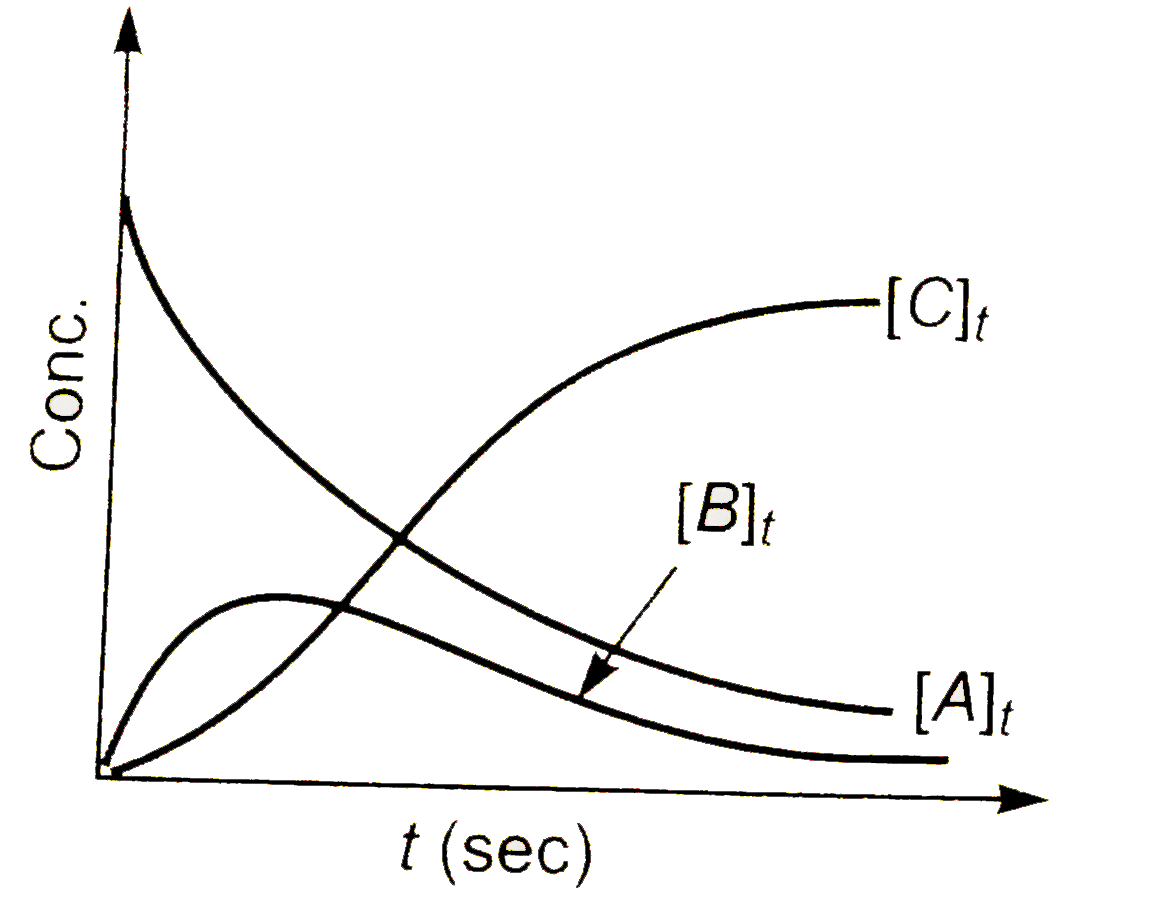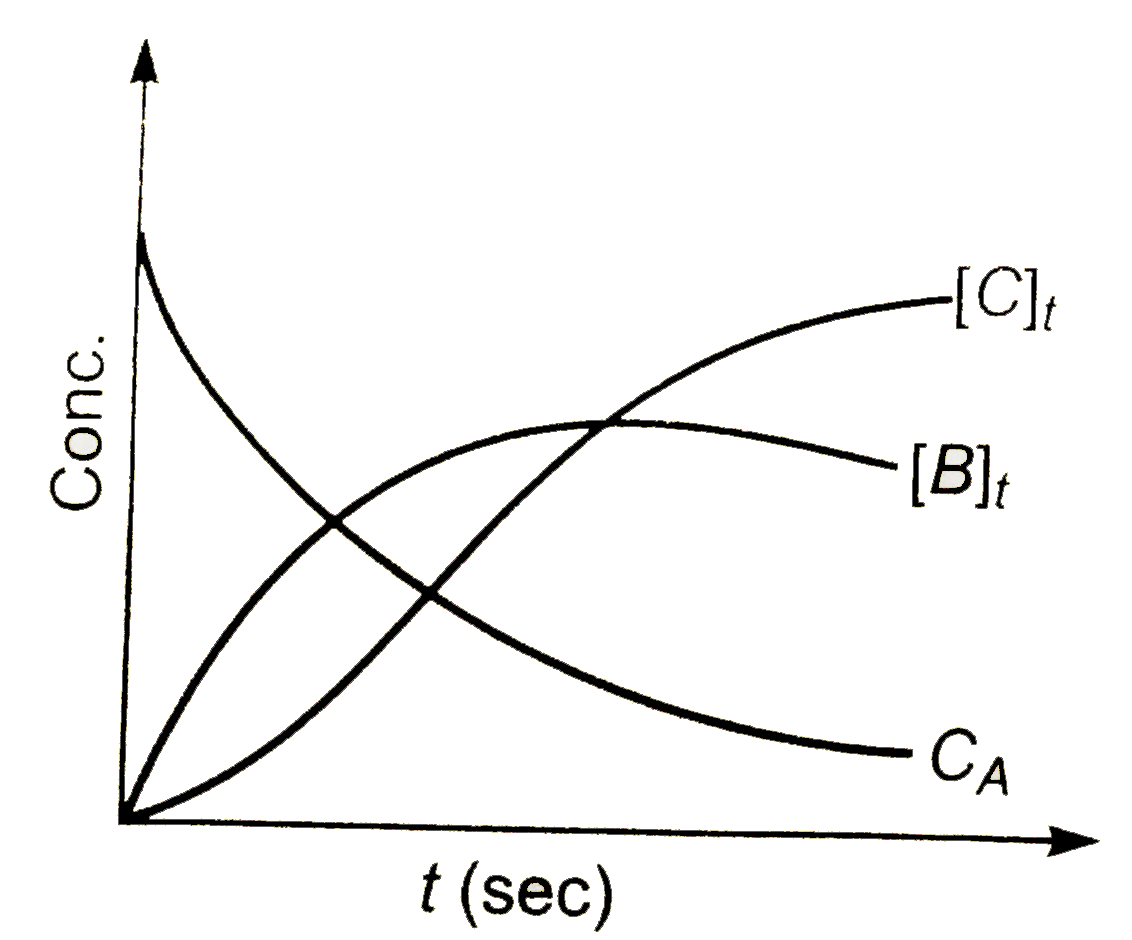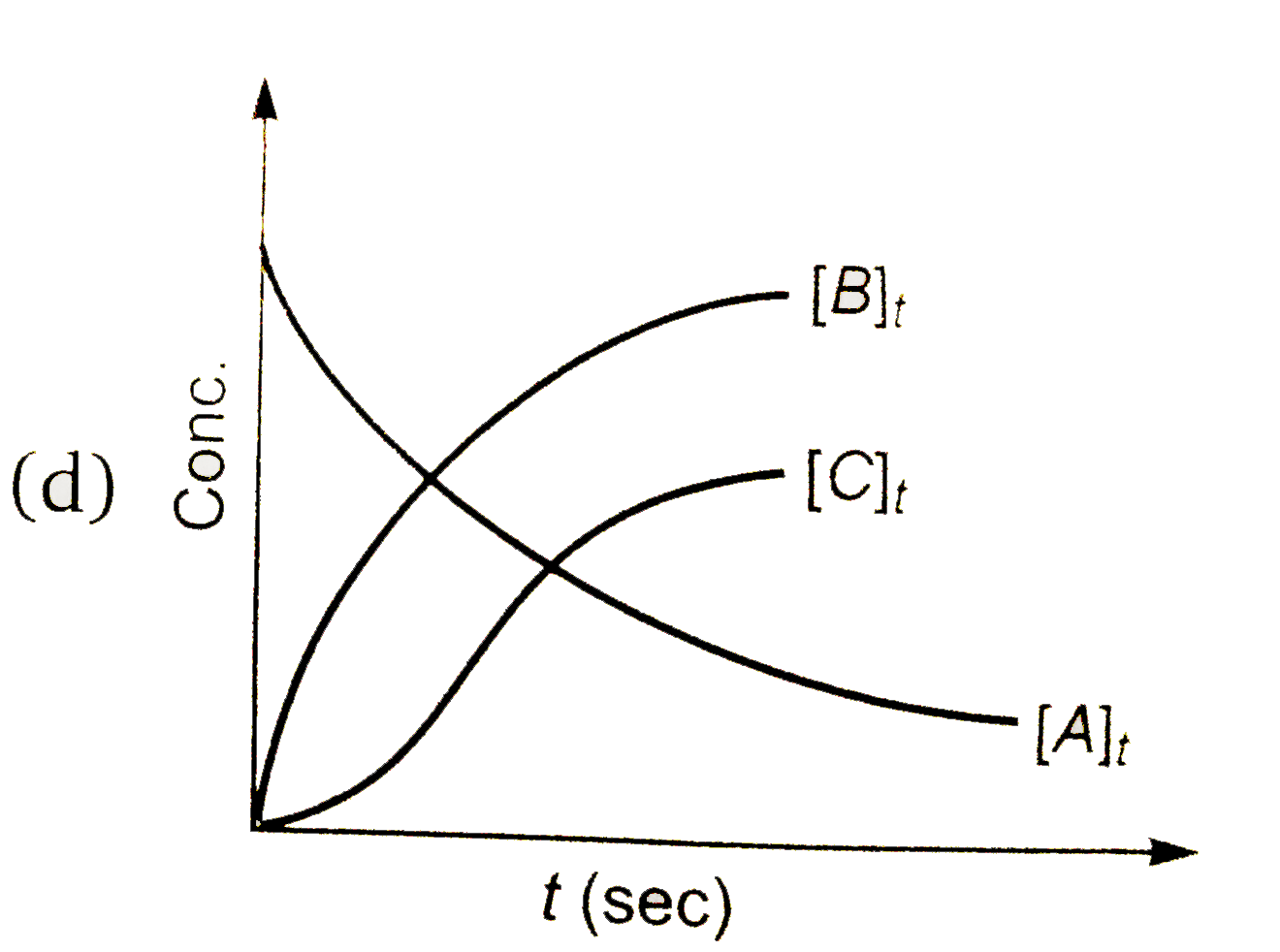Consider a reaction A+B→C , in which both reactants are in the same phase, may be
a) unimolecular elementary reaction
b) Exothermic
c) Heterogeneous
d) PhotochemicalSolution in Punjabi
unimolecular elementary reaction
Exothermic
Heterogeneous
Photochemical
The correct Answer is:B, C, D
Step by step video & image solution for Consider a reaction A+B rarr C , in which both reactants are in the same phase, may be a) unimolecular elementary reaction b) Exothermic c) Heterogeneous d) Photochemical by Chemistry experts to help you in doubts & scoring excellent marks in Class 12 exams.
Updated on:21/07/2023Topper's Solved these Questions
- CHEMICAL KINETIC & NUCLEAR CHEMISTRYBOOK - NARENDRA AWASTHICHAPTER - CHEMICAL KINETIC & NUCLEAR CHEMISTRYEXERCISE - Level 3 - Assertion - Reason Type Questions
3 Videos
- CHEMICAL KINETIC & NUCLEAR CHEMISTRYBOOK - NARENDRA AWASTHICHAPTER - CHEMICAL KINETIC & NUCLEAR CHEMISTRYEXERCISE - Level 3 - Subjective Problems
3 Videos
- CHEMICAL KINETIC & NUCLEAR CHEMISTRYBOOK - NARENDRA AWASTHICHAPTER - CHEMICAL KINETIC & NUCLEAR CHEMISTRYEXERCISE - Level 3 - Passage
1 Videos
- SURFACE CHEMISTRYBOOK - NARENDRA AWASTHICHAPTER - SURFACE CHEMISTRYEXERCISE - Level -2
1 Videos
Similar Questions
Each question contains STATEMENTS-1 (Assertion) and STATEMENT -2 (Reason).
Examine the statements carefully and mark the correct answer according to the instructions given below:
STATEMENTS-1: Acid catalysed hydrolysis of esters is pseudo first order reaction.
STATEMETNT-2:Water is present in excess in given reaction.
a) If both the statements are TRUE and STATEMENT-2 is the correct explanation of STATEMENT-1
b) If both the statement are TRUE but STATEMENT-2 is NOT the correct explanation of STATEMENT-1
c) If STATEMENT-1 is TRUE and STATEMENT-2 is FALSE
d) If STATEMENT-1 is FALSE and STATEMENT-2 is TRUE
View Solution5A→Product
In above reaction, half-life period is directly proportional to initial concentration of reactant. The initial rate of reaction is 400 moll−1−1min Then the order of reaction is
View SolutionTwo consecutive irreversible first order reactions can be represented by
Ak1−−→Bk2−−→C
The rate equation for A is readily interated to obtain
[A]t=[A]0.e−k1t , and [B]t=k1[A]0k2−k1[e−k1(t)−e−k2(t)]
When k1=1s−1 and k2=500s−1 , select most appropriate graph
a) b)
b) 
c) d)
d) 
View Solutionfor the graph below, select correct order of temperture ?

View SolutionConisder the following elementary reaction,
2A+B+C→ Products. All reactants are present in the gaseous state and reactant C is taken in excess.
What is the rate expresison of the reaction?
View SolutionConisder the following elementary reaction,
2A+B+C→ Products. All reactants are present in the gaseous state and reactant C is taken in excess.
What is the unit of rate constant of the reaction?
View SolutionFor an elementary reaction, 2A+B→C+D the molecularity is
View SolutionWhich of the following elementary reactions is unimolecular ?
View SolutionConsider a reaction A+B rarr C , in which boht reactants are in the same phase, may be
View SolutionLight reaction or the 'Photochemical' phase include (A)____,(B)____, (C)_____ and formation of (D)_____
View SolutionConsider the reaction. A+B→C+D
If the reaction is exothermic and spontaneous in the direction indicated, can you comment on the sign of ΔG and ΔS ?
View Solutionअभिक्रिया A+B→C में अभिक्रिया दर है R=k[A][B]2, यदि दोनों अभिकारकों की सांद्रता समान आयतन पर दो गुनी कर दी जाये तो अभिक्रिया की दर होगी-
View SolutionIf the concentration of the reactants in the elementary reaction 2A + B to C + D is increased three folds, the rate of the reaction will be increased by:
View SolutionConsider a reaction A+B→C , in this reaction both reactants are in the same phase, then, may be this reaction is :
View SolutionOn the basis of given reactions,the correct order of increasing oxidising of A,B,C & D is. [(a)A−+B→A+B− , (b) C+D−→noreaction , (c) C−+B→noreaction, (d) D+A−→D−+A]
View SolutionFor an elementary reaction, 2A+B→C+D the molecularity is
View Solution
